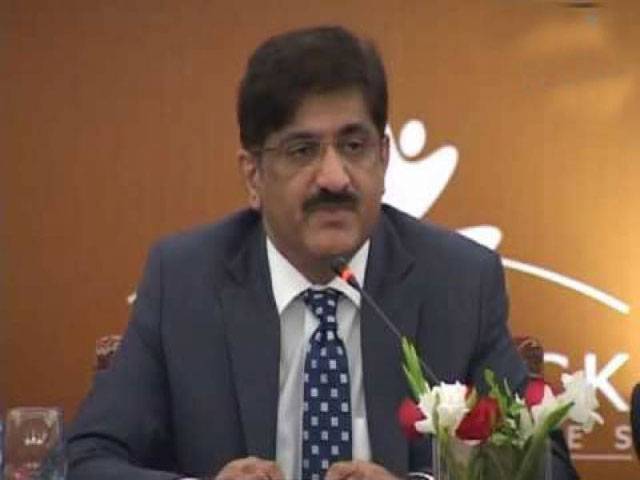KARACHI - Sindh Chief Minister Syed Murad Ali Shah has directed the education department to work out a detailed plan to improve overall education system, reduce drop out ratio and develop capacity building of the teachers.
He was presiding over a meeting at CM House on Wednesday to review the status of public sector education in the province.
The meeting was attended by Minister Education Jam Mehtab Dahar, Chief Secretary Rizwan Memon, Principal Secretary to CM Sohail Rajput, Secretary Education aziz Uqaili, Secretary Finance Hassan Naqvi and others.
The chief minister said that he had declared emergency in education sector but the net results were not encouraging. “There is a dire need of given proper attention to the weakness in the system so that they could be improved.”
Talking about major issues, Minister Education Jam Mehtab Dahar said that most of the school buildings are in dilapidated condition, roofs of majority of the schools are dangerous. The recent rains further damaged the structures. A survey of damaged and dangerous school buildings was conducted by the Education Works in September 2017 soon after heavy rains and found 6,157 damaged or dangerous schools for which Rs17,279 million are required to repair or reconstruct them. The chief minister termed the amount as an exaggerated figure.
Secretary Education Aziz Uqaili briefing the chief minister said that the enrolment target for primary was fixed at 77 percent against which 65 percent has been achieved. The enrolment target for middle school was set at 45 percent against which 35 percent achieved and the target for secondary was fixed at 35 percent against which 25 percent was achieved. He added that literacy ratio is 60 percent while the target has been set at 70 percent for 2018.
He said that the latest published report of Pakistan Education Statistics (2014-15) by National Education Management Information System, Islamabad says that in Sindh total school children of 5-16 years age are 11.9 million, of them 6.66 million are out of school. He added that overall 11,991,067 children (5-16 year of age), of them 5327,706 are in school and 6,663,361 are out of school. On this the chief minister said that it means 55.6 percent children are out of school.
The secretary education said that the dropout rate at primary level was 12.6 percent in 2014-15 and every year it is being reduced by three percent.
The meeting was informed that in 2016-17 there were 45,555 schools in the province, of them 42,383 are viable and 3172 nonviable. The overall enrolment in 2015-16 was 4,145,219 while it improved to 4229,128 in 2016-17. This shows a difference of 83,909 or 2 percent increase.
Similarly, in 2015-16 there were 156,216 teachers which reduced to 150,787 in 2016-17. The difference of 5429 teachers either retired or resigned due to start of biometric attendance system.
The chief minister was told that necessary measures have been adopted to strengthen governance in schools, 1016 headmasters at primary level have been appointed and education management cadre has also been introduced.
The chief minister said that he was not happy with the state of schools in the province and the drop ratio whether it is accurate or not but is quite disappointing.
He directed the education department to select 15000 primary schools as model schools and provide them all facilities and keep a proper teachers-student ratio and monitor their education process through proper surveillance and inspections. This process would definitely improve education at primary level. Similarly, 1000 secondary and higher secondary schools may also be selected as model school.
This is the only way to improve them in phases. But, it is surprising that the government schools which are being managed by private partners are giving good education and are producing results.
In the meeting it was pointed out that most of the government schools are functioning without electricity. On this the chief minister expressed his displeasure and questioned how it is possible to produce good students when they are forced to receive education without a fan and a light in their classrooms.
Secretary education said that the KE has claimed Rs119 million electricity bill. The chief minister directed chief secretary Rizwan Memon to call a meeting of KE and school education department to reconcile the bills. “This is unacceptable and I would not tolerate a situation in which power connections of schools are disconnected for want of payment. We allocate funds for payment of electricity bills and this year the amount is Rs110 million,” he said. The chief minister directed the education department (schools) to prepare a detailed plan how to improve education system, infrastructure and improve capacity building of the teachers and control drop out ratio and submit the same for his approval.






